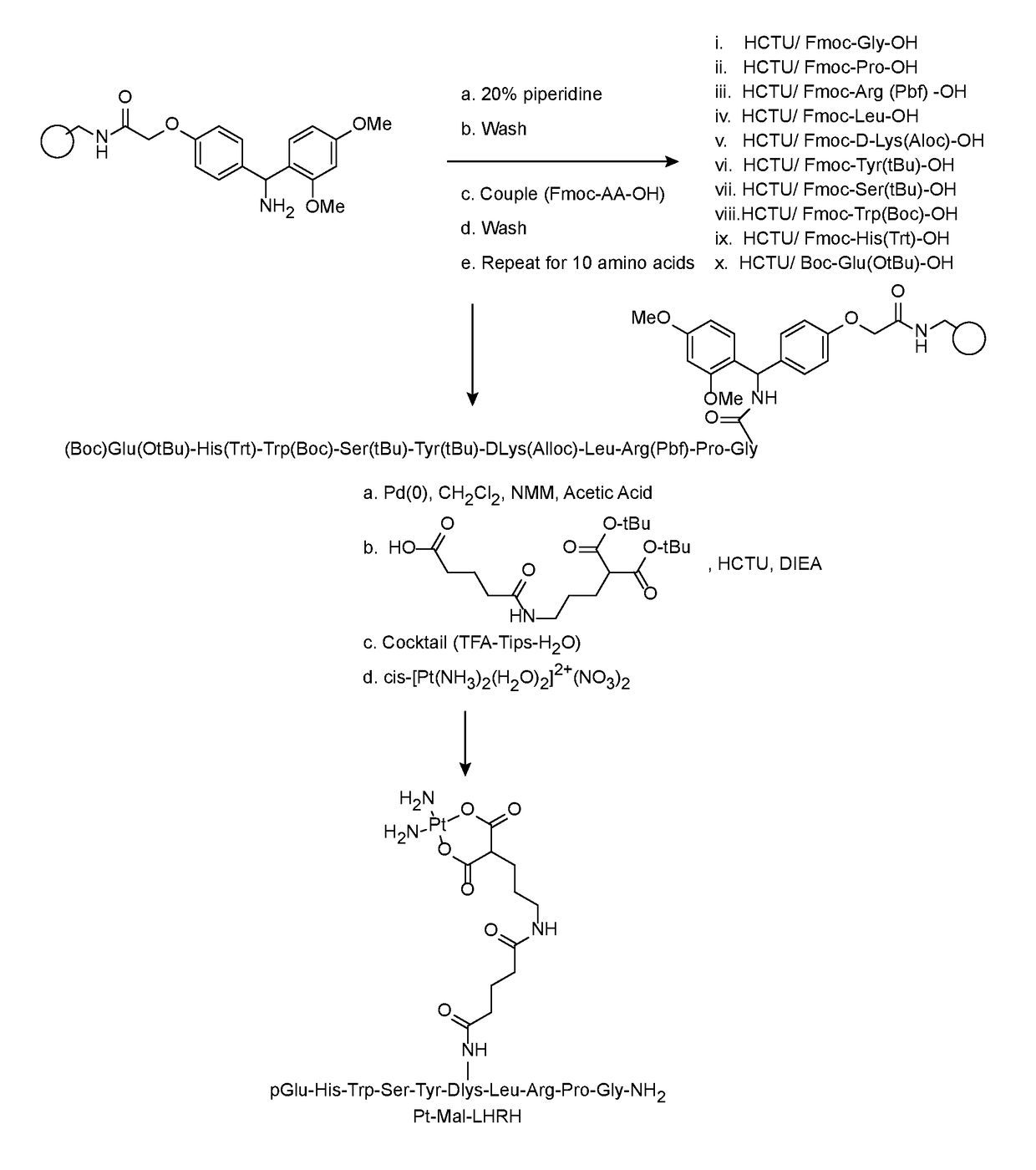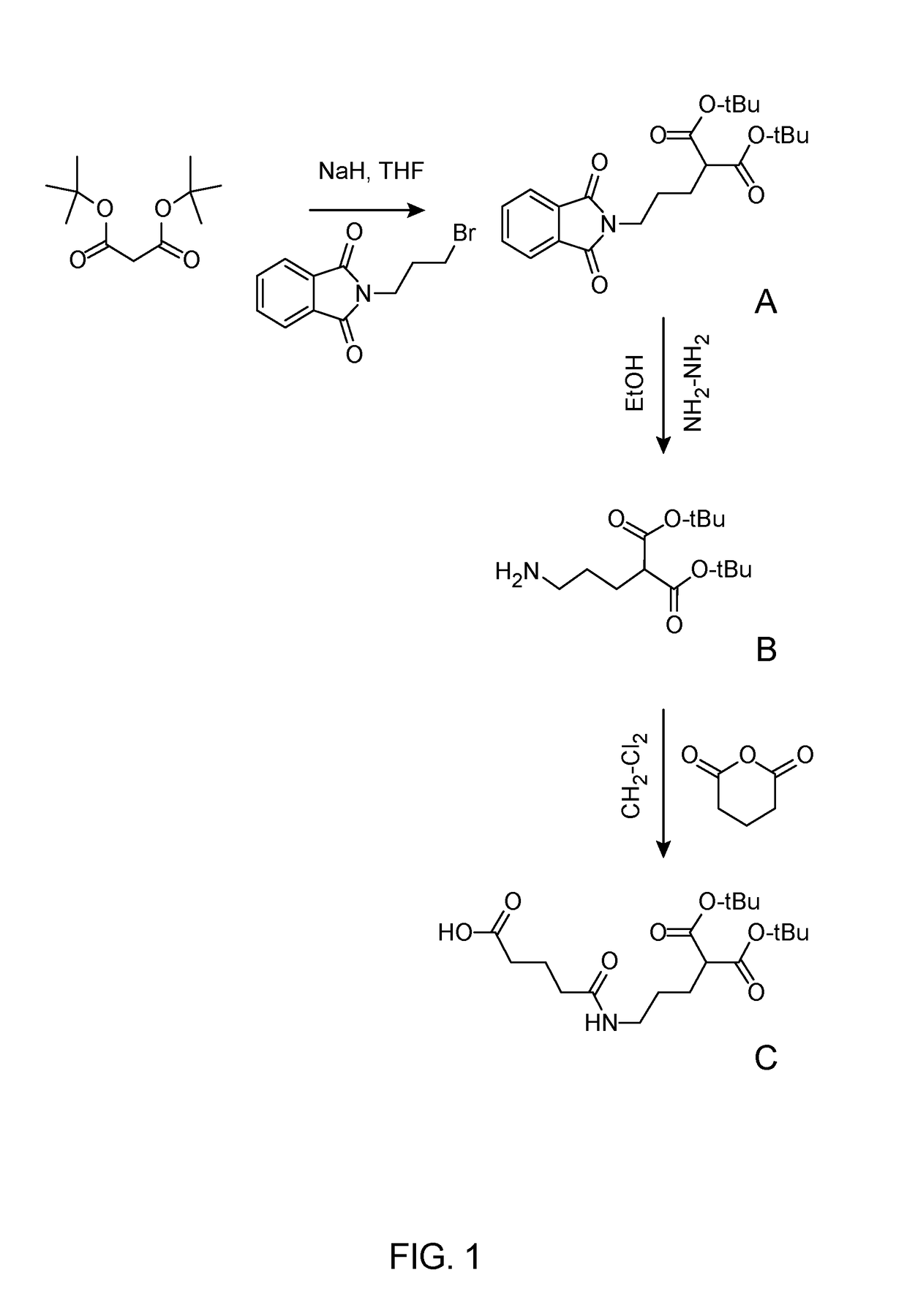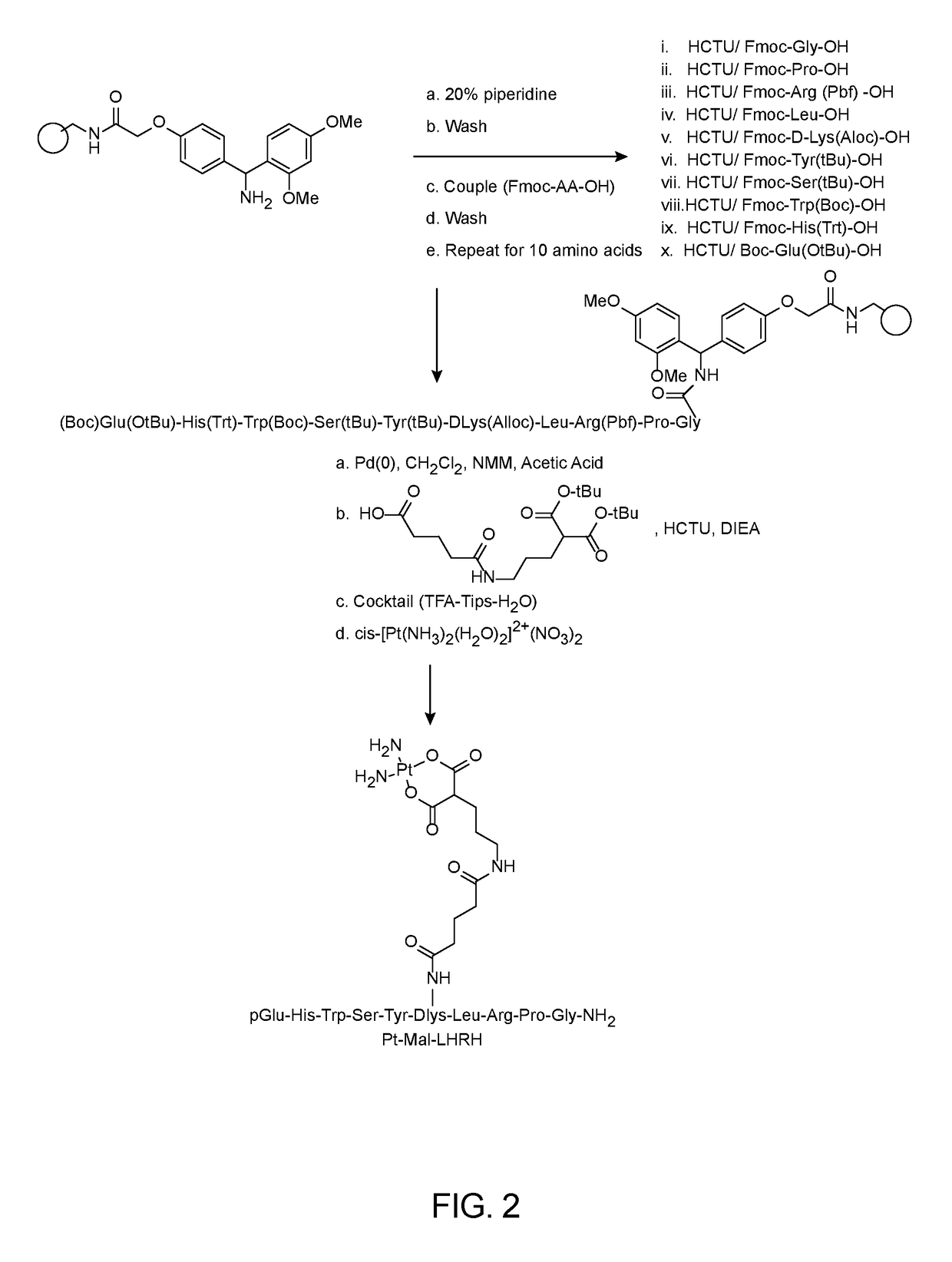LHRH-Platinum Conjugates For Treating Reproductive Cancers
a technology of conjugates and lhrh, which is applied in the field of cancer treatment and prevention, can solve the problems of reducing the concentration of conjugates, reducing the treatment effect of chemotherapy, and reducing the dose of chemotherapy, so as to reduce unnecessary exposure to normal cells and increase the concentration
- Summary
- Abstract
- Description
- Claims
- Application Information
AI Technical Summary
Benefits of technology
Problems solved by technology
Method used
Image
Examples
example 1
[0041]FIG. 1 depicts the synthesis of Mal Linker for conjugation with the LHRH Peptide and cisplatin in accordance with a preferred embodiment of the present invention. In the preferred example, the mal linker was successfully prepared by alkylating di-tert-butyl malonate using bromopropylphtalimide using a strong base under absolute dry conditions (see FIG. 1(A)). The product obtained, di-tert-butyl 2-(3-phthalimidopropyl) malonate was isolated using silica column chromatography and deprotected using hydrazine in absolute ethanol to give a free primary amine end (see FIG. 1(B)). The primary amine was reacted with gluatric anhydride to give di-tert-butyl 2-(3-(4-Carboxybutanamido)propyl)-malonate (Mal) (see FIG. 1(C)) as described by M. Ndinguri, et al., Bioconjugate Chem., 20, pp. 1869-78 (2009) thereby introducing a carboxylic functional group which was attached to the peptide moiety. Each step was purified by column chromatography or extraction and dried before proceeding to the ...
example 2
[0042]FIG. 2 depicts a synthesis of Pt-LHRH conjugate in accordance with a preferred embodiment of the present invention. The Mal-LHRH decapeptide was synthesized using Fmoc solid phase chemistry techniques and then chelated to activated cisplatin. Fmoc-Rink Amide-AM resin was placed onto a reaction vessel and washed with DMF and DCM in continuous-flow mode using a PS3 peptide synthesizer. The side chain protected amino acids derivatives used were Fmoc-Gly-OH, Fmoc-Pro-OH, Fmoc-Arg(Pbf)-OH, Fmoc-Leu-OH, Fmoc-DLys(Aloc)-OH, Fmoc-Tyr(tBu)-OH, Fmoc-Ser(tBu)-OH, Fmoc-Trp(Boc)-OH, Fmoc-His(Trt)-OH and Boc-Glu(OtBu)-OH. Moreover, the use of Boc protecting group instead of Fmoc in the last amino acid (Boc-Glu(OtBu) allows for a straightforward synthesis because it reduces the number of synthetic steps and avoids unwanted side chain reactions. The acid labile Boc protecting group is conveniently removed in the end during cleavage of the peptide from the resin. The amino acid couplings emplo...
example 3
[0044]Cytotoxicity Assay, in-vitro assays were used to explore the role of Pt-LHRH conjugates in cytotoxicity. The cytotoxic effect of free carboplatin, free LHRH and Pt-LHRH conjugate were assayed and compared using methyl thiazol tetrazolium (MTT) (3-(4,5-dimethylthiazol-2-yl)-2,5 diphenyltetrazolium bromide) assay as described in S. Aggarwal, et al., “Inhibition of growth and survival of human head and neck squamous cell carcinoma cells by curcumin via modulation of nuclear factor-KB signaling,” International Journal of Cancer, 111 (5), pp. 679-92 (2004).
[0045]Cells from prostate cancer cell line PC-3 (CRL-1435) and breast cancer cell line 4T1 (CRL-2539) were obtained from American Culture Type Collection (ATCC) and cultured in DMEM supplemented with 10% FBS, 100 units / mL penicillin, and 100 μg / mL streptomycin. Two thousand cells of PC-3 or 4T1 were treated with various concentrations of free carboplatin, LHRH or Pt-LHRH for 24 hours followed by further incubation (no treatment) ...
PUM
| Property | Measurement | Unit |
|---|---|---|
| resistance | aaaaa | aaaaa |
| concentration | aaaaa | aaaaa |
| mass spectrum | aaaaa | aaaaa |
Abstract
Description
Claims
Application Information
 Login to View More
Login to View More - R&D
- Intellectual Property
- Life Sciences
- Materials
- Tech Scout
- Unparalleled Data Quality
- Higher Quality Content
- 60% Fewer Hallucinations
Browse by: Latest US Patents, China's latest patents, Technical Efficacy Thesaurus, Application Domain, Technology Topic, Popular Technical Reports.
© 2025 PatSnap. All rights reserved.Legal|Privacy policy|Modern Slavery Act Transparency Statement|Sitemap|About US| Contact US: help@patsnap.com



